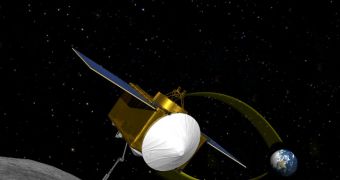Astronomers are proposing a new space mission to a near-Earth asteroid (NEO), this time to a rock called 1999 RQ36. They believe that this structure, which roams our planet's surroundings, may in fact be a geological time capsule, from the time when our solar system was born. Analysis of its composition could answer long-standing questions on how the planets and asteroid belts in our surroundings developed out of the Sun's initial protoplanetary disk. The 1,900-foot-wide space rock could also provide us with additional insight into how life appeared and developed on Earth. According to Space Fellowship, it may also hit us one day.
“This asteroid is a time capsule from before the birth of our solar system,” explains space expert Bill Cutlip, who holds an appointment at the Greenbelt, Maryland-based NASA Goddard Space Flight Center. The institution is currently engaged in an effort to develop a new sample-return mission to 1999 RQ36, which they have dubbed OSIRS-REx. The name stands for what the spacecraft could be capable of doing. If approved, the probe will be able to analyze the space rock, determine its structure and composition, and also assess the risk of it striking Earth. The REx part of its name stands for “Regolith Explorer,” which means that it will also be able to analyze the thin layer of dust and broken down rock that is usually produced on the surface of large asteroids by space collisions.
“We’ll orbit RQ36 for about a year to analyze its surface and select a sample site. This will give us experience with operating spacecraft in the vicinity of an asteroid, experience that will be useful if we ever have to send a mission to deflect one. [As for the landing part], gravity on this asteroid is so weak, if you were on the surface, held your arm out straight and dropped a rock, it would take about half an hour for it to hit the ground. Pressure from the sun’s radiation and the solar wind on the spacecraft and the solar panels is about 20 percent of the gravitational attraction from RQ36. It will be more like docking than landing,” explains GSFC OSIRIS-REx project scientist Dr. Joseph Nuth.
“With a pristine sample – especially one from an asteroid type not available in NASA’s meteorite collections – scientists will learn more about the time before the birth of our solar system, the initial stages of planet formation, and the source of organic compounds available for the origin of life,” he adds. The mission is currently under the “Phase A Concept Study Effort,” which is scheduled to complete by December, 2010. Once the review, for which the GSFC has received $3.3 million in NASA grant money, the space agency will decide if it allows the proposal to go further.

 14 DAY TRIAL //
14 DAY TRIAL //